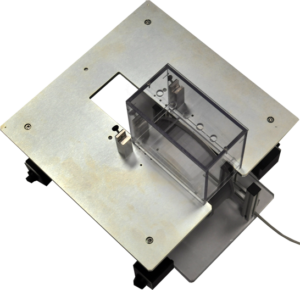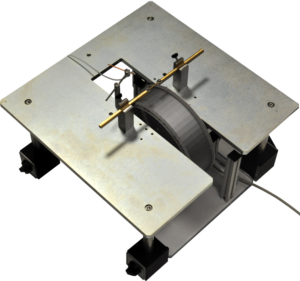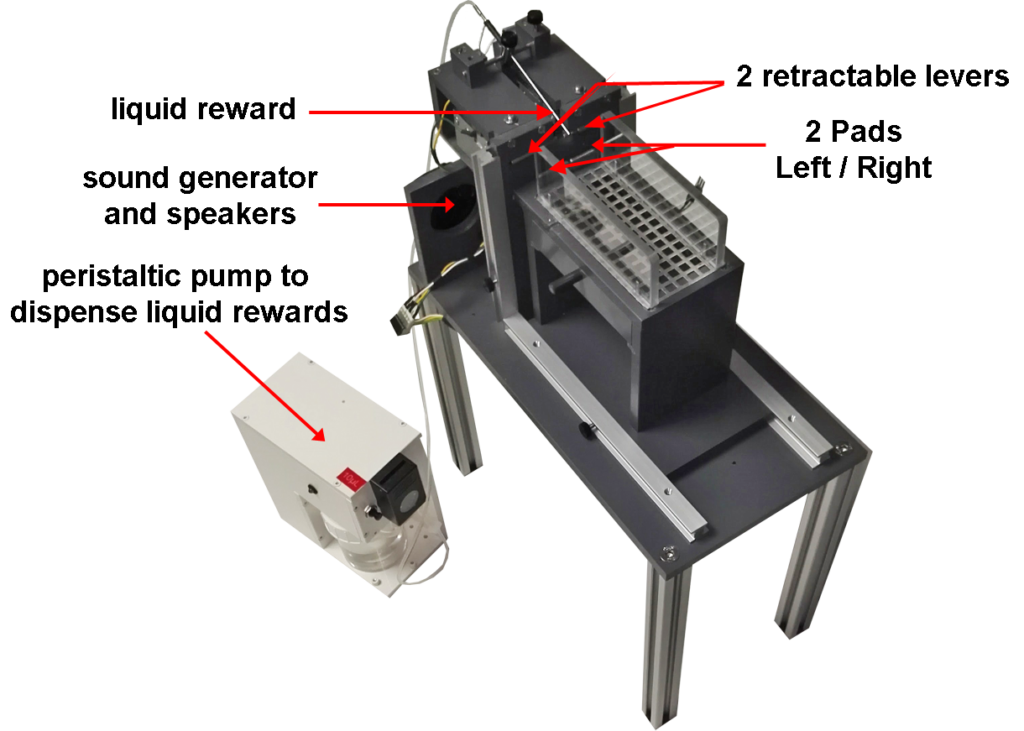We developed this apparatus to be totally integrated in a stereotaxic frame for Rats. This system is equipped with:
In this system, the researcher uses all the sensors and actuators available to conduct operant conditioning protocols.
All the behavioral events are recorded and dated, so that the experimenter may easily and quickly obtain the latency times, the errors, the sequence of correct/incorrect trials, …
This apparatus has been created in order to analyze neural network when an animal is running on an activity wheel in a conditioned manner. This system comprises:
A transparent habituation box is provided with the system. This allows a naive animal to get used to the running wheel and the operant tasks.
Ce système est livré avec une boîte transparente pour habituer l’animal à courir sur la roue sans être fixé.


All the behavioral events are recorded and dated, so that the experimenter may easily and quickly obtain the duration of locomotor activity, the latency times, the errors, the kinetics of the distance traveled,…

This apparatus has been developped to be placed under a two-photon microscope. It includes:
Our apparatus may be entirely synchronized with other external systems, via TTL pulses.